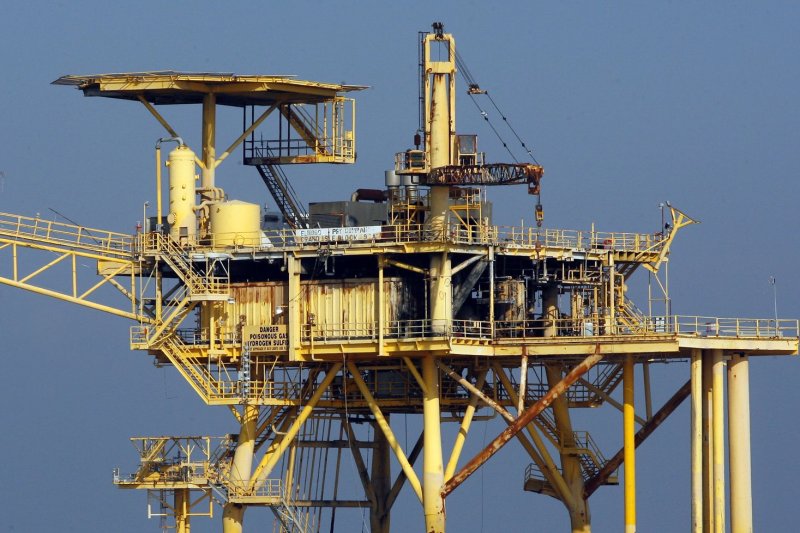Venezuela oil production is at historic lows, though OPEC production in December was still higher than in previous months, a market survey found. File photo by A.J. Sisco/UPI |
License Photo
Jan. 8 (UPI) -- Though Venezuelan oil production is lower than it's been in more than a decade, its fellow OPEC members picked up the slack, a market survey found.
A survey of production from the 14 members of the Organization of Petroleum Exporting Countries from commodity pricing group S&P Global Platts found total output in December at 32.4 million barrels per day, up 50,000 barrels per day from November.
OPEC members are now in their second year of a coordinated effort to balance an oversupplied market with production cuts. De facto OPEC leader Saudi Arabia, its largest producer, is leading by example, Platts reported, with production of around 9.9 million barrels per day last month, below its official quota by about 15,600 barrels per day.
Iraq, the second largest producer in OPEC, produced 4.41 million barrels per day last month, its highest level in three months. Exports from the southern port city of Basra also surged, in part in response to problems getting oil out of the north of the country. Federal pipelines north to Turkey were heavily damaged by war and the semiofficial Kurdistan Regional Government sends its own oil north, mostly by trucks.
Iran in November started new production from its South Yaran field, which Platts reported put the total December production to 3.82 million barrels per day, a slight increase from November. Iranian exports, meanwhile, may face headwinds later this week if U.S. President Donald Trump decides not to issue a waiver on sanctions tied to the U.N.-backed nuclear deal.
Paul Hickin, the oil director at Platts, told UPI last week that Trump, not political unrest, is the main threat to Iranian output.
Under the multilateral nuclear deal, formally the Joint Comprehensive Plan of Action, the president decides whether to go against the principles of the agreement and reinstate sanctions, or issue another waiver, as he did last year. The lack of Iranian barrels on the market would likely drive the price of crude oil closer to $70 per barrel. Brent crude oil, the global benchmark, was priced near $68 per barrel early Monday.
The situation is different for Venezuela, however. Platts reported the 1.7 million barrels per day from the Latin American country is its lowest since the early 2000s. Venezuela is in the grips of a wide-reaching crisis that's left the state oil company, known as PDVSA, short of funds and equipment to produce. Platts described the situation, and chance for a production rebound, as "grim."
The OPEC balancing effort has been credited with holding the price of crude oil above $50 per barrel through the fourth quarter and into 2018.
"Many OPEC watchers have said the production cut deal could unravel if prices rise too high and members seek to capitalize on the greater earning potential and battle for market share with U.S. shale supplies," the Platts report read.
A committee monitoring compliance with the OPEC agreement, which includes non-member state producers like Russia, meets Jan. 21 to review market conditions.















